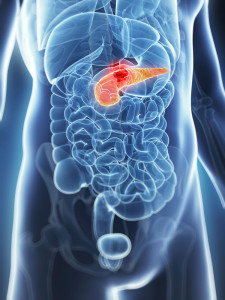Introduction
When the pancreas turns cancerous, it is called cancer of the pancreas, but synonymous names are pancreatic cancer or pancreas cancer. Cancer of the pancreas is a deadly cancer, because it is difficult to diagnose early. By the time it is diagnosed, it usually is already in an advanced stage with a very poor survival rate. It is responsible for about 5% of all cancer deaths and in 1995 it was the 5th leading cause of adult deaths. Only cancer of the skin, lung, prostate and breast exceed the occurrence of pancreatic cancer. Once diagnosed, only about 3% of patients will still be alive in 5 years. Only recently is there some hope for better survival using immunotherapy (seeRef. 3 and 4).
Summary
Pancreas cancer is still a devastating disease, as treatment for this cancer has not shown any progress in the last decades. This is because the cancer is very hidden in the center of the body and does not give any symptoms in the initial phases.
Also, there is still no mass screening test available. It is not feasible to do a CT scan and an ultrasound of the abdomen as well as an ERCP test on every adult above 50 years of age. But perhaps in the near future there will be an equivalent of the PSA test for prostate cancer. Right now your best defence is to look at the beginning of this chapter under “causes and statistics” and avoid the known toxins in your diet. This involves abuse of alcohol and the consumption of sausages and meat and cheese products that contain nitrates and nitrites as preservatives. Read your labels and stay sober!
Also, there is still no mass screening test available. It is not feasible to do a CT scan and an ultrasound of the abdomen as well as an ERCP test on every adult above 50 years of age. But perhaps in the near future there will be an equivalent of the PSA test for prostate cancer. Right now your best defence is to look at the beginning of this chapter under “causes and statistics” and avoid the known toxins in your diet. This involves abuse of alcohol and the consumption of sausages and meat and cheese products that contain nitrates and nitrites as preservatives. Read your labels and stay sober!
The Bottom Line
Avoid nitrates and nitrites in your food. Watch labels on sausages, cheeses and meat products. Next cut out all liquor more concentrated than wine. Limit wine to 1 glass 2 or 3 times per week or the equivalent in beer or coolers. If you can stay away from alcohol altogether, it is better for your pancreas. The dose response curve starts at zero meaning that there is no safe dose for anybody’s liver or pancreas, or a woman’s ovaries. These are the most alcohol sensitive organs in the body.
References
1. Cancer: Principles &Practice of Oncology.4th edition. Edited by Vincent T. DeVita, Jr. et al. Lippincott, Philadelphia,PA, 1993. Chapter on Cancer of the pancreas.
2. Cancer: Principles&Practice of Oncology. 5th edition, volume 1. Edited by Vincent T. DeVita, Jr. et al. Lippincott-Raven Publ., Philadelphia,PA, 1997. Chapter on Cancer of the pancreas.
3. T Nishihara et al. Jpn J Cancer Res 2000 Aug;91(8):817-824.
4. L Staib et al. Int J Cancer 2001 Apr 1;92(1):79-87.
5. Conn’s Current Therapy 2004, 56th ed., Copyright © 2004 Elsevier
6. Ferri: Ferri’s Clinical Advisor: Instant Diagnosis and Treatment, 2004 ed., Copyright © 2004 Mosby, Inc







